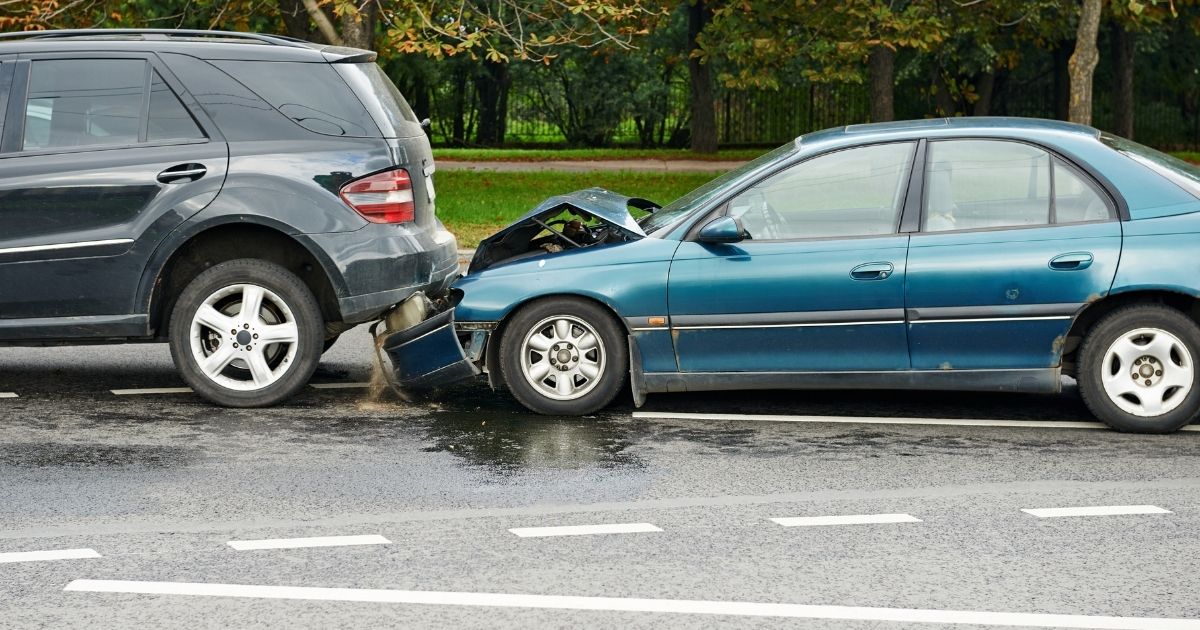What Should I Know about Rear-End Car Accidents?

Recent research suggests that rear-end car accidents make up around a third of all collisions. Though most rear-end accidents do not end in fatalities, no fewer than half a million people experience personal injury after being involved in this type of accident. In fact, every car accident lawyer knows that rear-end accidents can leave lasting issues for victims.
Why are Rear-End Collisions Dangerous?
Even though rear-end accidents are commonplace, they can be very serious or even catastrophic for victims. This is because drivers and passengers typically have little time before impact to expect the jarring action. Generally speaking, people who are in the leading, or front-most, car tend to suffer more serious medical injuries than those in the tailing, or back, car.
Types of Injuries Linked to Rear-End Accidents
The rear-end accident is a very specific type of collision in which the tailing car hits the leading car abruptly. Therefore, certain injuries are usually seen in varying degrees with rear-end accidents.
- Whiplash: People in leading cars often experience a jarring motion of the head. As the head lurches forward and backward, the soft tissues and vertebrae suffer injuries. Sometimes, the injuries are not apparent, such as pain, headaches, and limited mobility that happen days after the wreck. In many cases, victims end up with lifetime discomfort after experiencing whiplash in rear-end accidents.
- Traumatic brain injuries: Along with whiplash, traumatic brain injuries may occur after rear-end accidents. Again, this is caused by the brain being jostled suddenly and violently within the skull. Concussions are frequently reported after rear-end accidents. Fortunately, mild concussions usually respond to time and treatment. With that being said, more serious concussions may end up leading to temporary disability.
- Broken bones: Owing to the impact of being hit from behind, the driver of the leading car may slam against the wheel and console. This can lead to broken bones, particularly in the arms, wrists, and fingers. Even if the airbag is deployed, bones can still undergo so much force that they break.
- Soft tissue damage: When muscles, ligaments, and tendons are stretched, strained, sprained, or bruised, they can turn into nagging, painful problems. Even after many weeks or months of physical therapy, some soft tissue injuries may linger.
Who is at Fault After a Rear-End Accident?
Not surprisingly, most of the time, the tailing driver is deemed at-fault for a rear-end accident. Why? Most rear-end collisions happen because the tailing driver is:
- Following too closely to be able to slow down effectively and efficiently.
- Not paying attention to the driving of the car in front.
- Speeding and not anticipating the moves of other cars, sometimes during lane changes.
- Assuming the leading driver will go through a yellow light or start up immediately after a light switches from red to green.
Interestingly, sometimes the leading driver is partially or fully liable for rear-end accidents. This could occur if the leading driver:
- Does not use a turn signal.
- Stops without any kind of warning.
- Has not properly maintained the brake lights on the vehicle.
- Reverses suddenly in the middle of moving traffic.
Keeping that in mind, liability is determined on a case-by-case basis. Consequently, a car accident lawyer will want to know all the details of the rear-end accident to help a client understand the possibility and probability of receiving compensation for economic and non-economic damages.
Preventing Rear-End Car Accidents
Although not all rear-end accidents can be avoided, drivers can lessen their likelihood of getting into this common type of collision:
- Drive at the posted speed limit.
- Reduce driving distractions, including music.
- Stop tailgating, especially on busy streets.
Drivers and passengers who follow the rules and still get into a serious rear-end collision should contact a car accident lawyer to discuss options before agreeing to any insurance settlement or compensation offers.
Washington DC Car Accident Lawyers at the Law Offices of Duane O. King Work with Victims Hurt in Rear-End Collisions
Rear-end car accidents happen in the Washington DC area on a regular basis. If you have been hurt in one of these common types of accidents, reach out to the Washington DC car accident lawyers at the Law Offices of Duane O. King. We care about the welfare of our clients, and we will aggressively fight to ensure they receive the best possible compensation. Call us at 202-331-1963 or contact us online for a free consultation. Located in Washington, DC, we work with car accident victims in Prince George’s County, including Laurel, Beltsville, Adelphi, College Park, Greenbelt, Mitchellville, Woodmore, Greater Upper Marlboro, Springdale, Largo, Bowie, Capitol Heights, District Heights, Forestville, Suitland, and Seat Pleasant, Clinton, Oxon Hill, Temple Hills, and Fort Washington.
